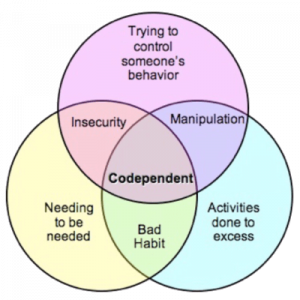Relationships are all about, give and take. So whats a codependent relationship.

So what happens when in the relationship when one of you gives too much? Sacrificing your own responsibilities, friendships, and even there very being? Well, that might mean you are in what psychologists call a “codependent relationship.”
So come on what is a “codependent relationship?“
“In codependent relationships, one person is doing the bulk of the caring, and often ends up losing themselves in the process,”
Dr. Shawn Burn, author of Unhealthy Helping: A Psychological Guide to Codependence, Enabling, and Other Dysfunctional Giving.
We all know that in a healthy relationship, the give and take is relatively balanced and equal over time. But in a codependent relationship, two roles are formed, the giver and the taker.
Givers
Have a need to keep the relationship alive, fear the fact of being alone, which can then cause them to express themselves physically and emotionally way to please their partners. (sounding familiar keep reading)
Takers
On the other hand, takers benefit from getting much more than they give. The typical taker is said to lack maturity or suffer from an addiction or personality disorder. (do you feel like this)
Often within these relationships, a cycle is created and that’s really not easy to break. The giver continues to overcompensate, while the taker avoids assuming responsibility. They become codependent, relying on each for relief from insecurity and fear.
Am I in codependent relationships?

I am looking at, in my self-discovery and therapy, where my own codependent tendencies come from. with this, I have found that lots of studies trace this back to childhood when we start to develop patterns in how we connect with people, or what psychologists are calling “attachment styles”. Now I am not a psychologist or therapist but I have read up on this for a while and want to share my findings.
“The reason you develop an insecure attachment style is because you probably didn’t have secure attachments with your parents,” (yeah daddy issues)
Well, lets these questions in our heads to see if you are in codependent relationships:-
- How much time in a day do you spend thinking about your relationship?” If the answer is most of the time, then the answer is more than likely yes!
- Are constantly seeking reassurance, “Do you love me? “ and “Do you promise you won’t leave me?”
- Putting your partner on that pedestal, idealizing them despite there faults and making excuses for your loved one even when they neglect important tasks. Givers often think they’re helping but actually preventing them from personal growth.
If you are at risk of being in a codependent relationship you might want to take note of these signs, as codependent relationships can often start off as healthy relationships. Givers and takers are drawn to each other, givers wear themselves out as they fight for the reassurance they may never get from the taker, while the takers continue avoiding their emotions and taking responsibility for their actions.
What can I do to fix it?

If you are still reading then the questions above have told you that there is some codependency in your relationship. I am working on mine through therapy, and with this, your codependent relationship can become more balanced and fulfilling but both of you are going to need to be committed to making the relationship work. It’s important to take that risk if your partner is going to run away, they’re going to run away anyway. If you are in a codependent relationship you or your partner are not bad people, most people have some degree of insecure attachment. The key here is to learn when it’s time to give, take, or walk away.






